Irish Celtic Crosses– 16 Important Celtic Cross sites in Ireland
The Irish Celtic Cross (sometimes called a Gaelic cross) is known throughout the world as a symbol of Irish culture and Heritage and you will spot them all over when travelling Ireland. The history of Irish Celtic crosses stretches back through centuries and they have become a much sought-out feature on the Irish landscape.
Everywhere you travel in both Ireland and Northern Ireland you will spot graveyards and cemeteries with many Irish celtic crosses. Whether you are catholic or protestant the Celtic Cross has a meaning that goes beyond simple sectarian divisions in Ireland.
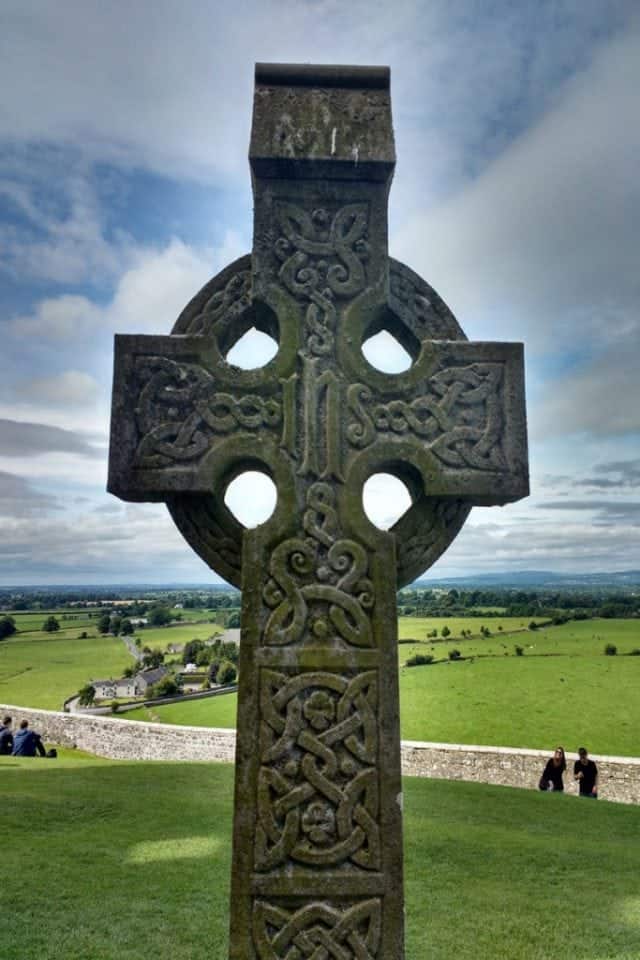

There are at least 60 Celtic crosses in Ireland, as well as a number of ruins. The Irish crosses that are seen today were mainly built up until the mid-12th century. After the end of the 12th century, the construction of these celtic crosses all but disappeared.
- Irish Celtic Crosses– 16 Important Celtic Cross sites in Ireland
- History of the Irish Celtic Crosses
- Celtic cross meaning
- Structure of the Celtic Cross
- Celtic cross variations
- Evolution of the Celtic Cross
- 16 Important Celtic Cross sites in Ireland
- Carndonagh Cross, County Donegal
- Durrow High Cross, County Offaly
- Muirdeach’s Cross, Monasterboice, Co. Louth
- Kilree High Cross, County Kilkenny
- Cross of St. Patrick, Rock of Cashel, Tipperary
- St. Kevin’s Cross, Glendalough, County Wicklow
- Kells Celtic Cross, Kells, County Meath
- Kilkieran Celtic Crosses, County Tipperary
- Clonmacnoise Celtic Cross, Clonmacnoise, County Offaly
- The Ahenny High Crosses, County Tipperary
- Graiguenamanagh Cross, County Kilkenny
- Ardboe Cross, Cookstown, Co. Tyrone
- Drumcliffe Cross, Drumcliffe, County Sligo
- Doorty Celtic Cross, County Clare
- Nether Cross, St. Canice’s Church, Finglas, Dublin
- Moone High Cross, County Kildare
- Emery Celtic Cross, Killea Donegal
Xyuandbeyond is reader-supported. When you buy through links on our site, we may earn an affiliate commission. You can read my privacy policy here.
History of the Irish Celtic Crosses
In Ireland, the Celtic cross is inextricable from Christianity. However, the origin of the Celtic cross pre-dates Christianity and has its origins in a much older spiritual environment often nature-based.
How old is the Celtic Cross? As a symbol of Christianity, the Celtic cross first appeared in the 8th Century and was said to have been introduced to Ireland and Britain by early Christian missionaries in Ireland it is believed it was introduced by Saint Patrick.
From Roman writings, we know that the cross with a circle came about due to victory wreaths being draped across the horizontal bar of the cross. In Egypt, the belief is that the Celtic cross comes from the 6th-century Coptic church which used the Ankh as a symbol.
Origins of the Celtic cross – Irish crosses and their meanings
Celtic Crosses were first used in sun worship as a symbol of fertility and life. Pre-Christianity the Irish cross was known as a Sun Cross or Sun Wheel and was a symbol of Odin, the Norse god. Before Christianity came to Ireland Gaelic people worshipped a number of different gods who used symbols similar to a cross.
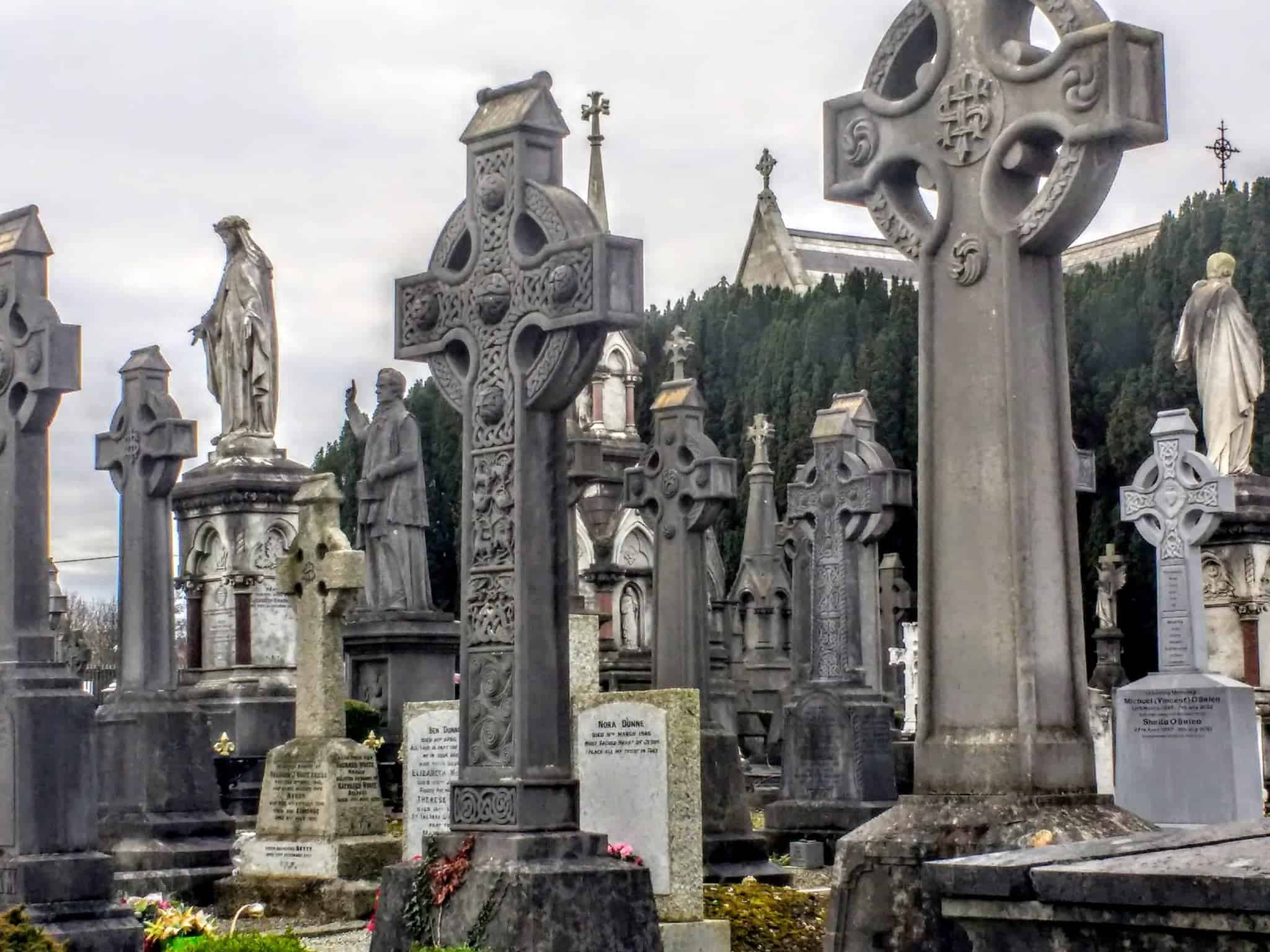

Taranis, the God of Thunder is believed to be a version of Thor the Norse god. He was often depicted as holding a wheel in one hand and a thunderbolt in the other. Taranis, in Gaelic means Thunderer and this god was mentioned in a work by the Roman poet Lucan in the 1st century.
During the Bronze Age, the Taranis wheel was often seen on Celtic coins or worn as jewellery. It had four spokes and was known as the Sun Wheel or Sun Cross. However, there are many different meanings. One suggests that the cross represents the four directions of north, south, east and west or the four elements; earth, fire, air and water.
In Ireland, as well as across the Celtic nations including Gaul, Hispania, Britain, and Ireland, but also in the Rhineland and Danube regions Gaelic crosses began appearing as early as the 7th century.
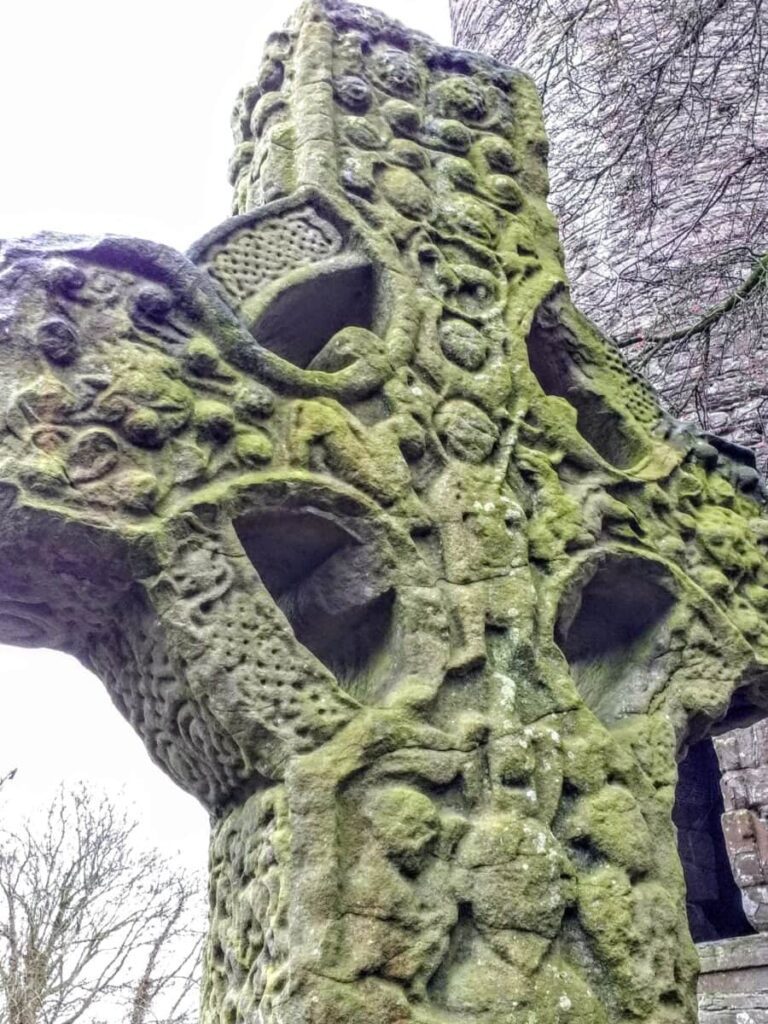

As Ireland converted to Christianity, the cross remained an integral symbol, and it is generally believed that St. Patrick used existing symbols that the Irish were already familiar with, which made it easier to move to a belief in Christianity.
We also know that the Catholic church co-opted many pagan beliefs into their practices in order to convince pagans to convert to Christianity.
Celtic stone crosses abound in the cemeteries in Ireland. Although during early Christian and pagan times, there are crosses to be found in Ireland that are not Celtic crosses. For example, the Black Nun’s grave marker, in Ballycastle is a round stone.
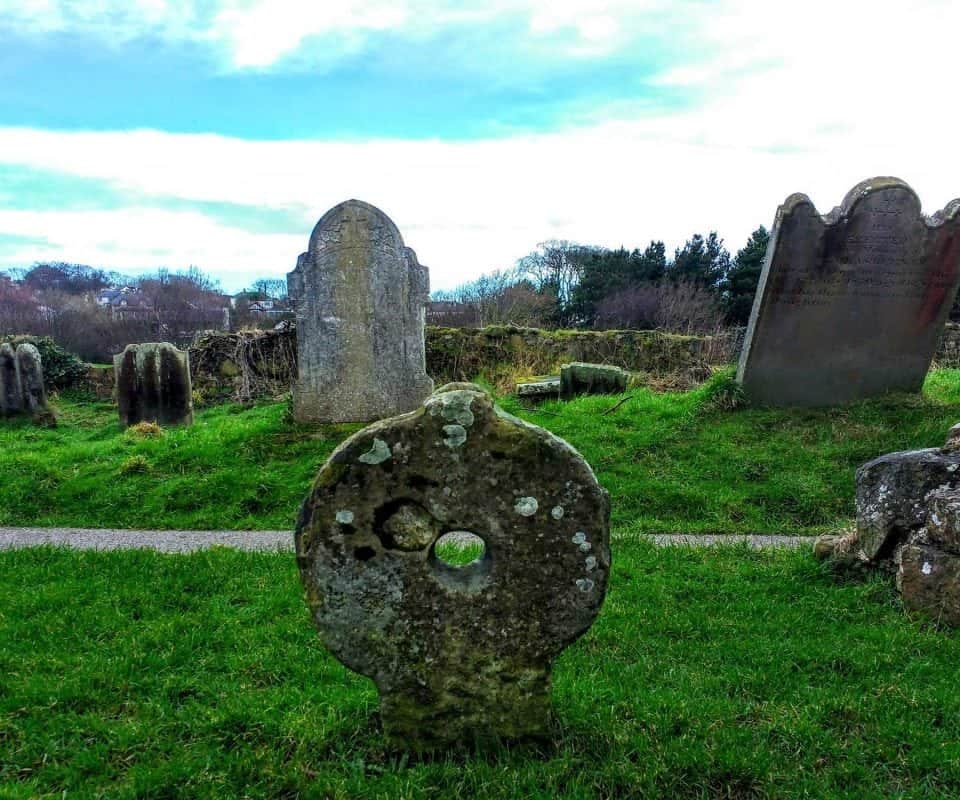

The Janus Stone in the Caldaragh graveyard pre-dates Christianity quite possibly by thousands of years and it is a two-faced tombstone.
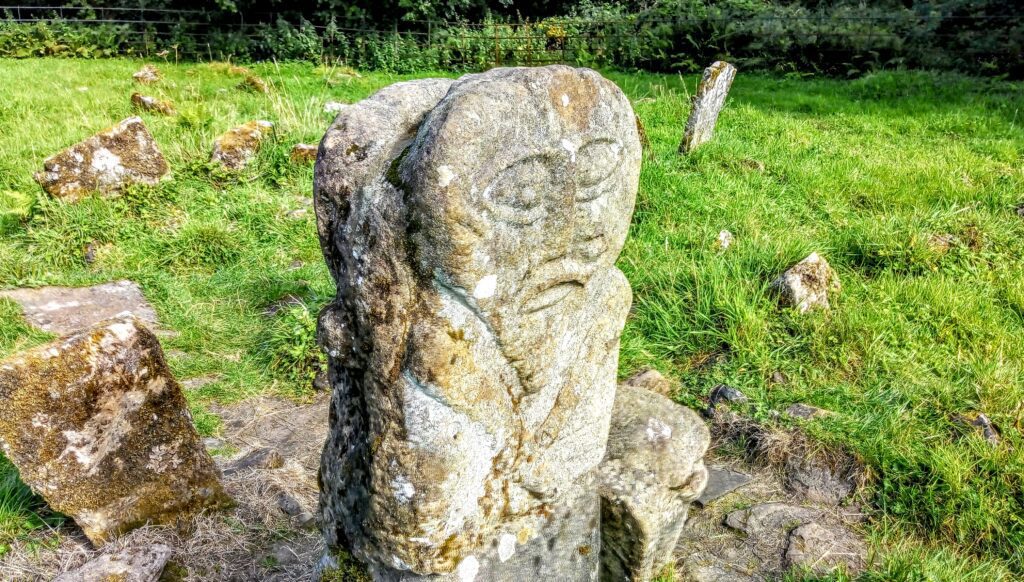

The Killaghtee Cross is a significant piece of Ireland’s Celtic heritage. This early Irish Celtic cross was a precursor to the elaborately crafted Celtic High Crosses, for which Ireland became famous with the adoption of Celtic Christianity.
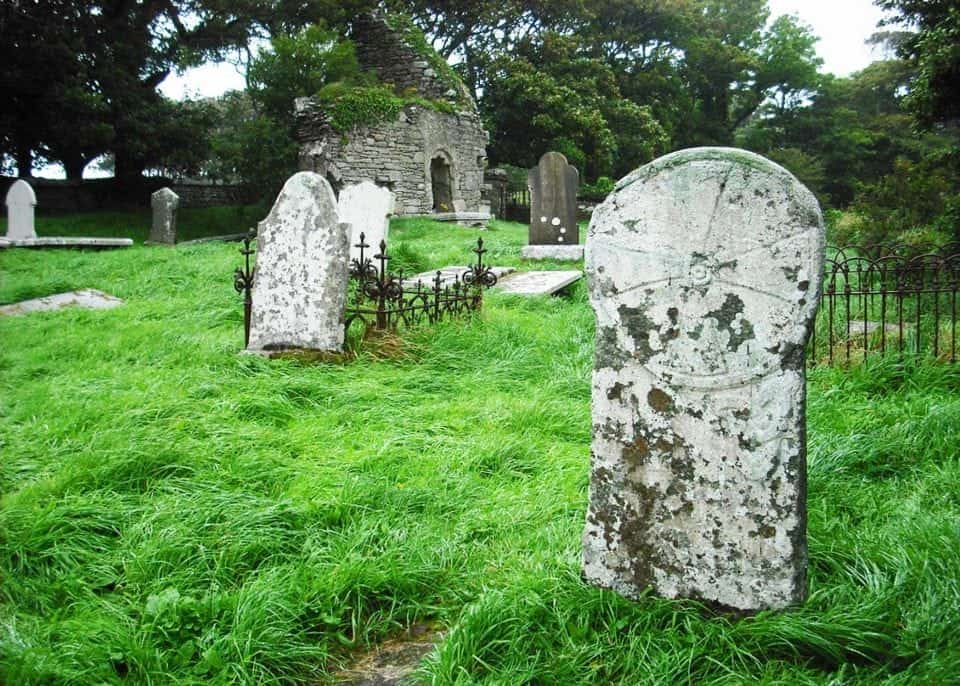

It is believed to mark the grave of Saint Aédh who was an early Irish Christian Bishop and reputed miracle worker. It is said that he is descended from the Celtic High King of Ireland, Niall of the Nine Hostages.
Celtic cross meaning
The crosses were likely stone monuments to mark sacred and important places in Celtic folklore. They would also have been used as boundary markers, and meeting places and to declare the area they stood in as Christian.
Increasingly the crosses were located near or within a monastic site. Typically these sites included a small church and a round tower such as the one at Glendalough.
The round towers were used as a defensive measure against the Vikings. When the villagers or monks would gather for a service often the churches were too small to contain the crowds so the cross was used as a gathering point.
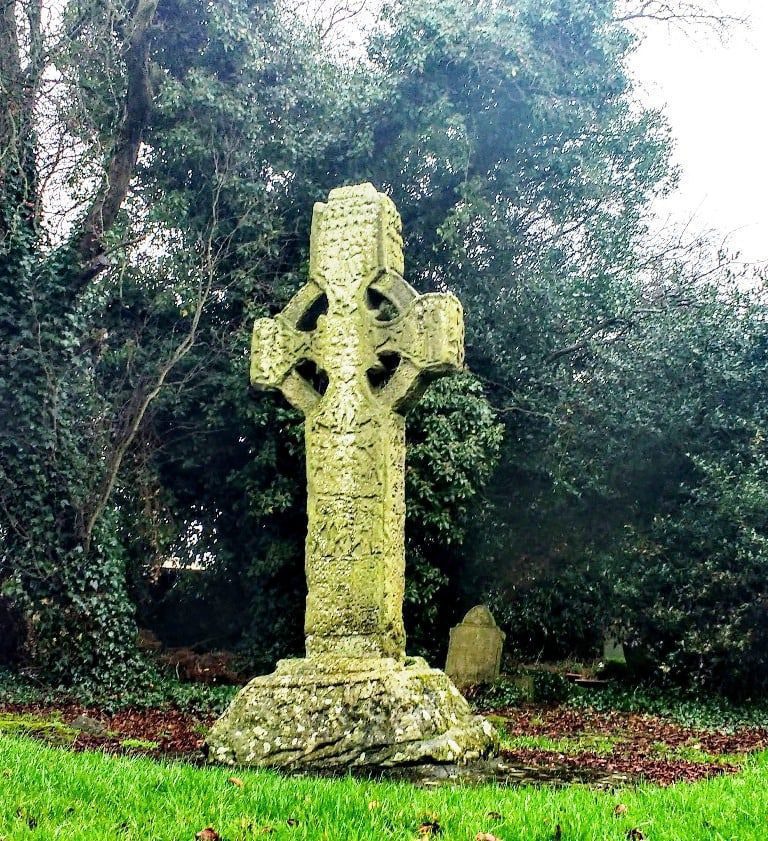

Structure of the Celtic Cross
A Celtic cross can also be called an Irish High Cross and they are found throughout Ireland. The original ancient Celtic crosses have 4 major components.
Celtic cross symbolism – these Celtic high crosses were not used to mark burial places and were never used as headstones. The more modern headstones borrow from these original monuments.
Sandstone and granite are the most common stones used to carve these crosses but due to their softness, they are prone to weathering and the elements that make the carvings on some Celtic crosses indistinct.
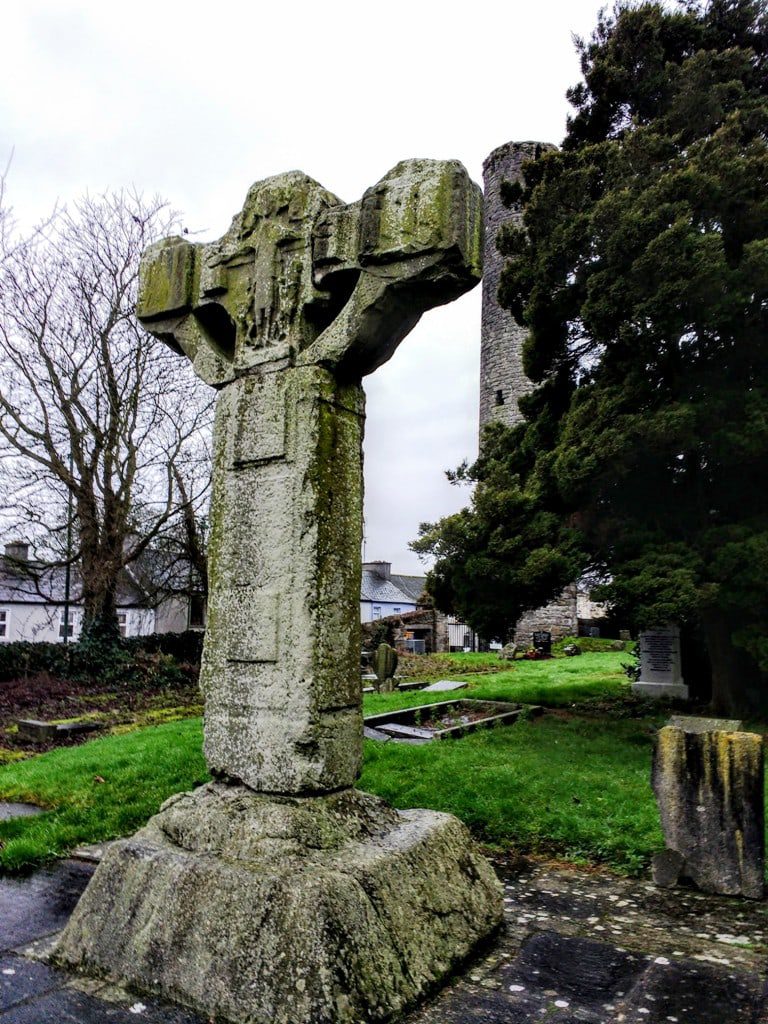

Early crosses stand about eight feet high with some later crosses much taller. The tallest of the Irish crosses is the so-called Tall Cross at Monasterboice, County Louth. It stands at seven metres or twenty-two feet high. At Kells, you can see a replica of the Book of Kells which was found here and there are 5 Celtic Crosses.
Celtic cross variations
The first examples of high crosses in Ireland were decorated in typical Celtic fashion with interlacing patterns, Celtic knots, vines, dragons and Celtic symbols later carved figures were introduced to represent Biblical stories and passages.
Over time these large crosses became covered in Bible stories which would allow the monks and priests to tell the tales of the Bible which were illustrated on the crosses. Often on the base of the cross, there were Ogham inscriptions and the names of those who had the crosses made.
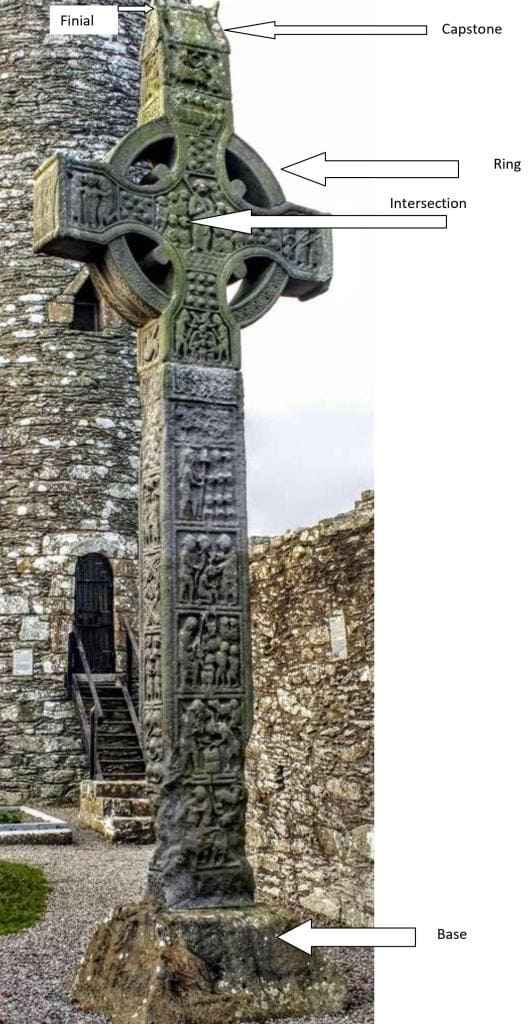

The major components of the Celtic cross are:
– Cross base
– Intersection
– Ring
– Capstone (including the finial)
The masons who built the Celtic cross started with a very heavy stone base that may have come from a mill. The high cross itself is seated into the base and then the cross shaft is decorated with a series of panels.
Traditionally, these panels are used to show important biblical scenes or to highlight elements of Celtic design and art.
Evolution of the Celtic Cross
During the late 19th and early 20th century, a Celtic Revival took place thanks to the popularity of Irish writers including William Butler Yeats, Lady Gregory, “AE” Russell, Edward Martyn, Alice Milligan and Edward Plunkett. An appreciation of Irish literature and poetry and Celtic symbolism took hold throughout Great Britain.
Since then the Celtic Cross as a symbol has moved beyond a religious symbol and has become an iconic symbol of Ireland itself.
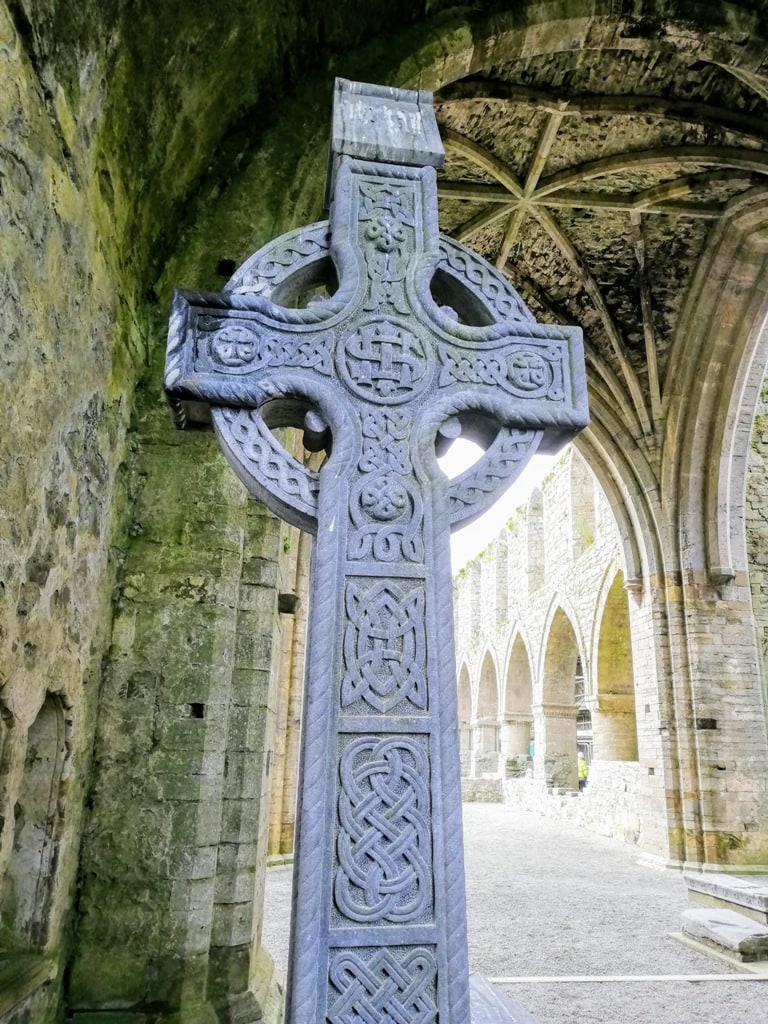

16 Important Celtic Cross sites in Ireland
Ireland has over 30 surviving examples of Celtic crosses from various dates and with varying decorations. Here are some of the most historically significant and impressive examples.
Carndonagh Cross, County Donegal
This is considered the oldest Celtic cross in Ireland and it is found on the Inishowen Peninsula in Carndonagh Donegal. It is generally believed that Saint Patrick founded a monastery here in the 5th century.
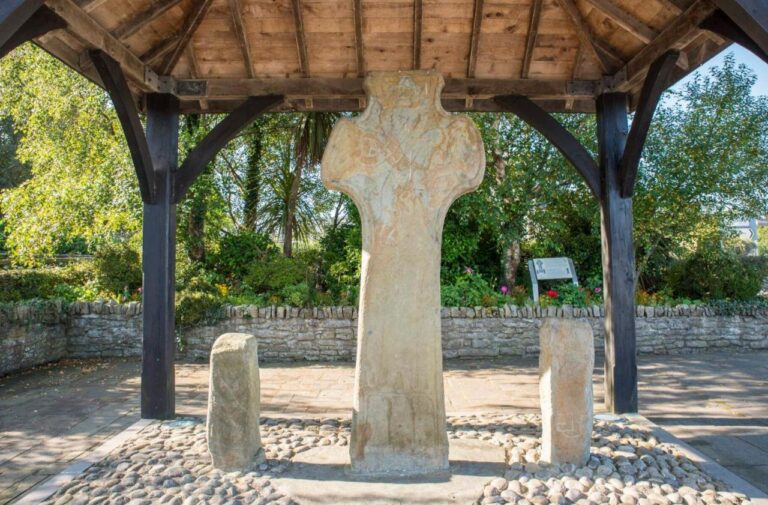

Durrow High Cross, County Offaly
The Celtic cross of Durrow is located in Durrow Abbey, County Offaly. Durrow is the site of one of the earliest and most important monasteries founded by St Columcille around 550. The Book of Durrow is an illuminated Gospel manuscript that pre-dates the Book of Kells. Both can be seen, in Trinity College Dublin.
The High Cross of Durrow, together with several Cross Slabs are now housed, on-site, in a small exhibition within a conserved church. This is a fine cross standing at 3.60 metres.
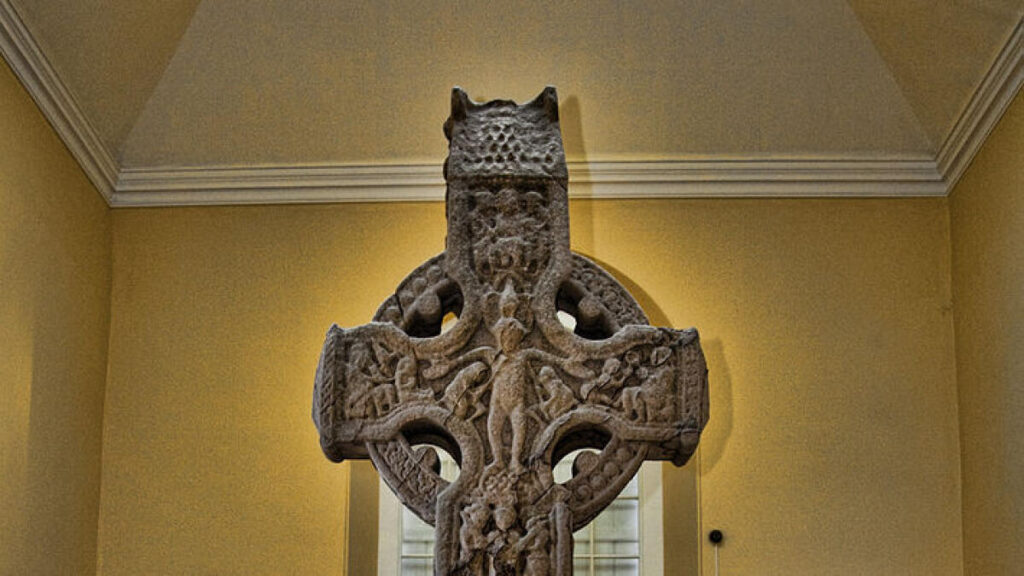

Muirdeach’s Cross, Monasterboice, Co. Louth
Considered one of the finest of the high crosses and the largest Celtic cross in Ireland, Muirdeach’s Cross stands around 22 feet tall and is found in the ancient Monasterboice graveyard. It is generally thought that the cross gets its name from Muiredach mac Domhnaill, who was responsible for its construction. He died in 923.
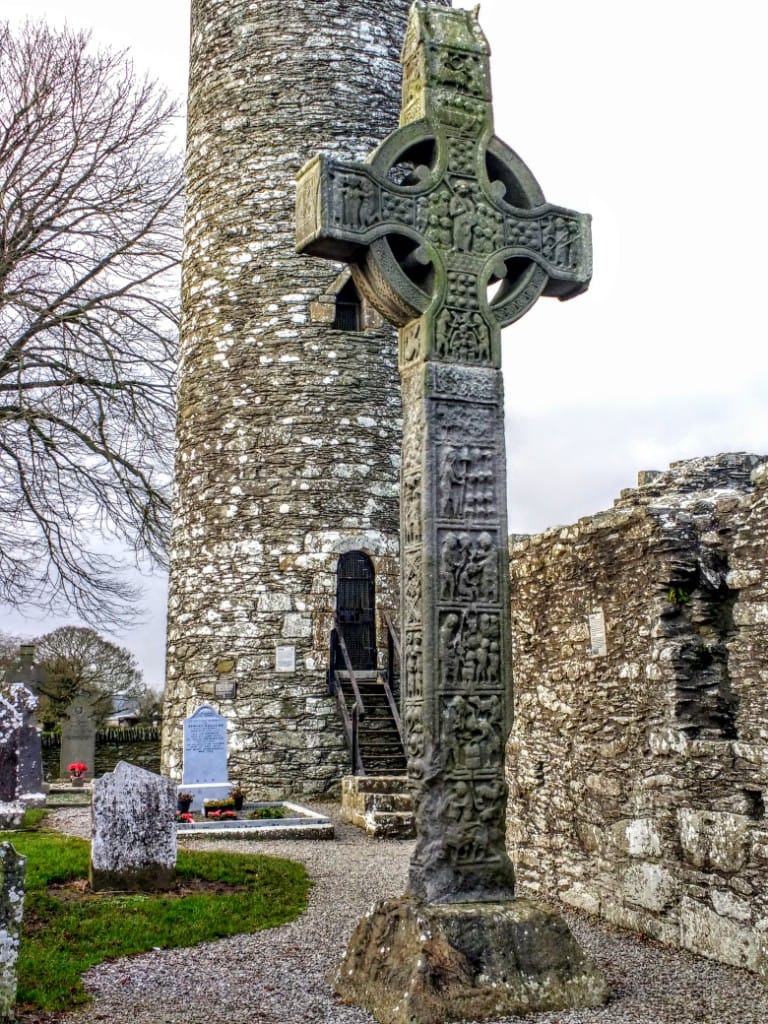

The cross dates from the 10th century and is constructed from sandstone. Each side is covered with almost 50 decorative carving panels with 124 different figures depicted and 17 different spiral, interlaced, and key patterns. In the centre of the front of the cross is a carving of the last judgement, while on the other side is the crucifixion. Just about every other well-known bible story is also featured somewhere on the cross, including David and Goliath, Adam and Eve, and Cain and Abel.
Kilree High Cross, County Kilkenny
This Kilree Celtic Cross is near Kells County Kilkenny and appears to be missing its capstone it has been badly affected by the weather so many details are hard to make out. The cross stands around 9 feet tall and is believed to date from the 9th century.
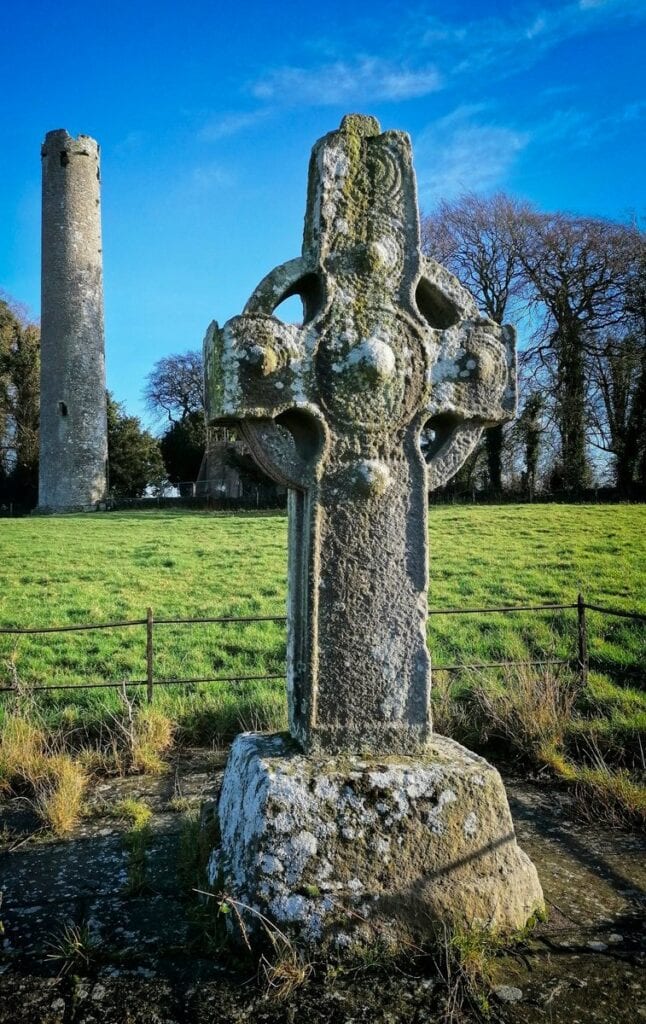

Cross of St. Patrick, Rock of Cashel, Tipperary
The 12th-century High Cross at the Rock of Cashel is pretty worn by the weather. Originally the cross had two stone supports but only one remains. One side of the cross has a crucifixion scene and the other has a Bishop carrying a crozier most likely thought to be St. Patrick. The cross stands at 2.28 metres high and is now located in the medieval Hall of the Vicars’ Choral.
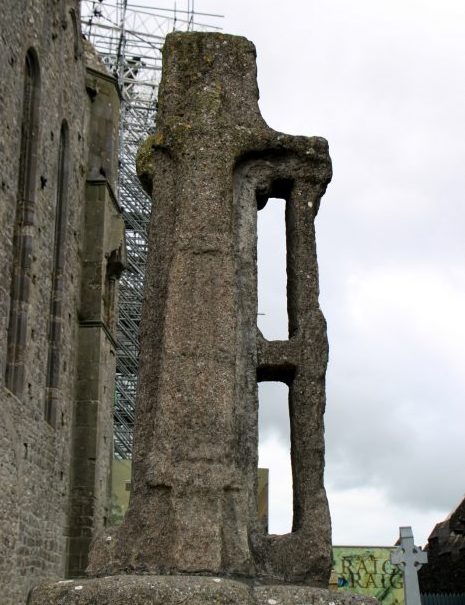

St. Kevin’s Cross, Glendalough, County Wicklow
The Glendalough monastic settlement is the earliest in Irish history, founded by Kevin (Irish: Coemhghein), a descendant of one of the ruling families of Leinster. As a child, he studied under three holy men (Eoghan, Lochan and Eanna) and as a young man, he went to live at Glendalough “in the hollow of a tree.”
By 540, his fame had spread far and wide and his followers came to Glendalough and developed a seminary and monastery in his name. Eventually, Glendalough, with its seven churches, became one of the chief pilgrimage destinations in Ireland.
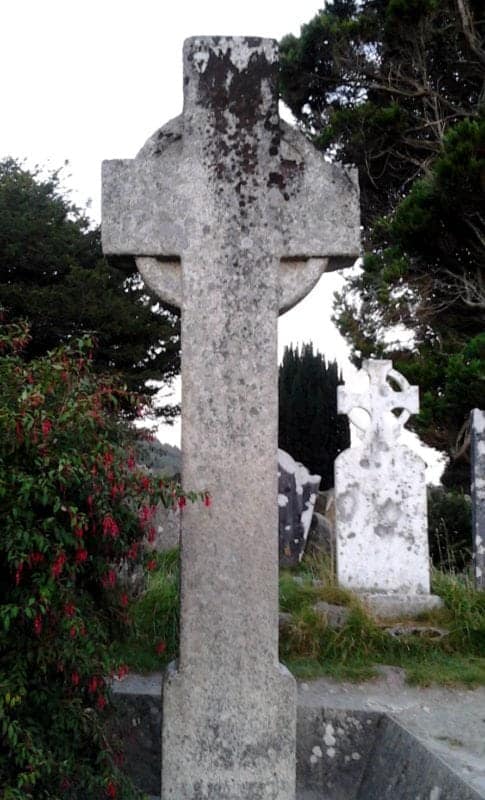

The ‘city’ consists of a number of ruins and remains the tallest and most impressive being the round tower which stands over 30 meters high. The largest building at Glendalough is the cathedral, with the earliest part being the nave, which is believed to have been built in the 10th century.
A few meters south of the cathedral is an ancient cross of local granite with an un-pierced ring, which is known as St. Kevin’s Cross. The cross is undecorated and very plain and the legend says that if you can wrap your arms around the cross and make a wish it will come true.
Kells Celtic Cross, Kells, County Meath
Kells is home to St. Columba’s Monastery and the churchyard at Kells contains several large celtic crosses. The original Kells Cross had to be moved as it was located in the middle of town and was hit by a car. The cross now stands outside the Kells Visitor Centre.
If you are visiting Kells you can also see a replica of the Book of Kells which was believed to have been found at St. Columba’s.
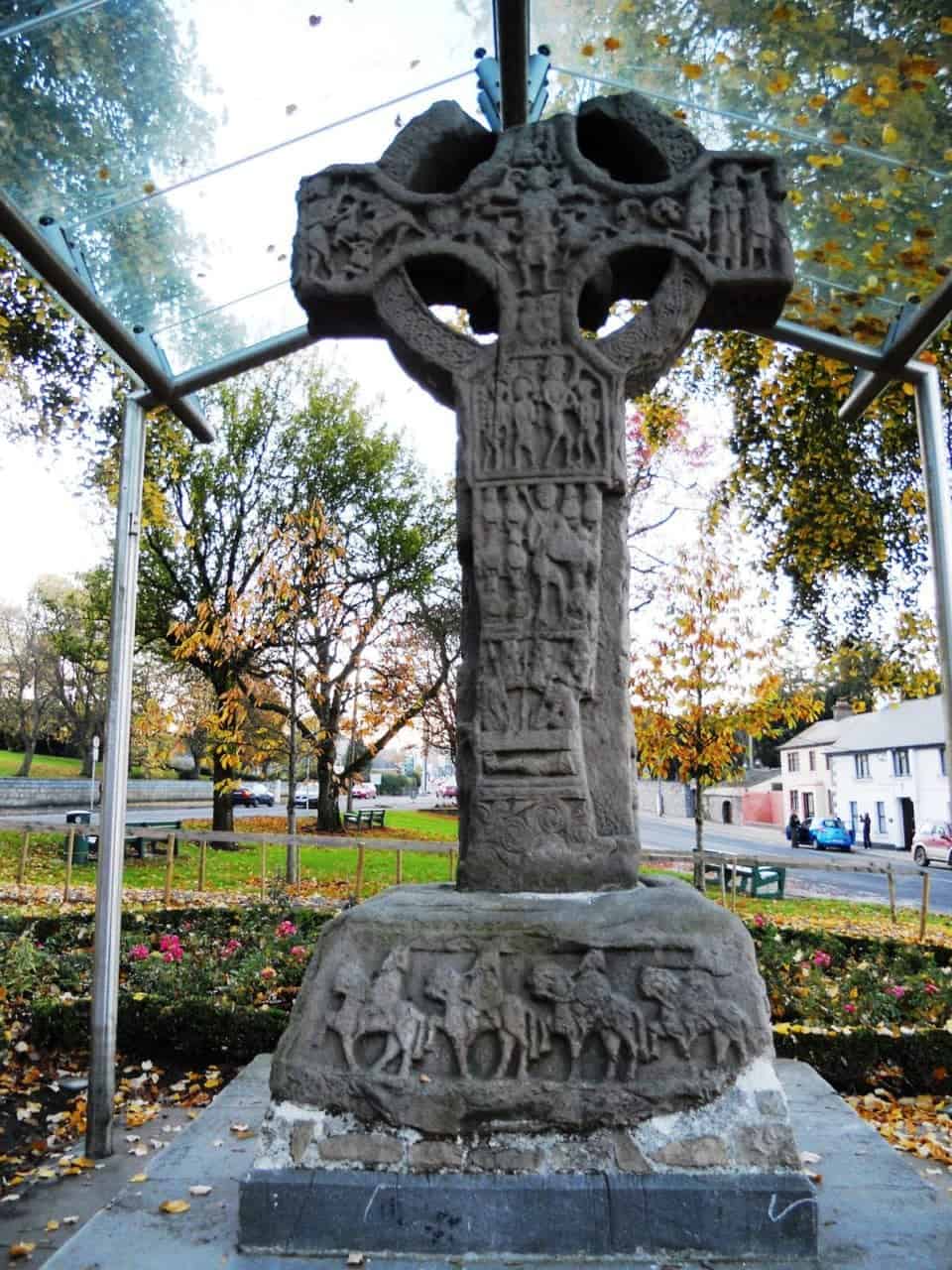

Kilkieran Celtic Crosses, County Tipperary
There are three Celtic crosses at Kilkieran a former monastery site in Tipperary and they are said to represent some of the earliest examples of this cross style. Thought to have been erected in the 9th century, they are built from sandstone. Primarily focused on intricate Celtic designs and symbols, these crosses do feature some animals, and in particular, horses.
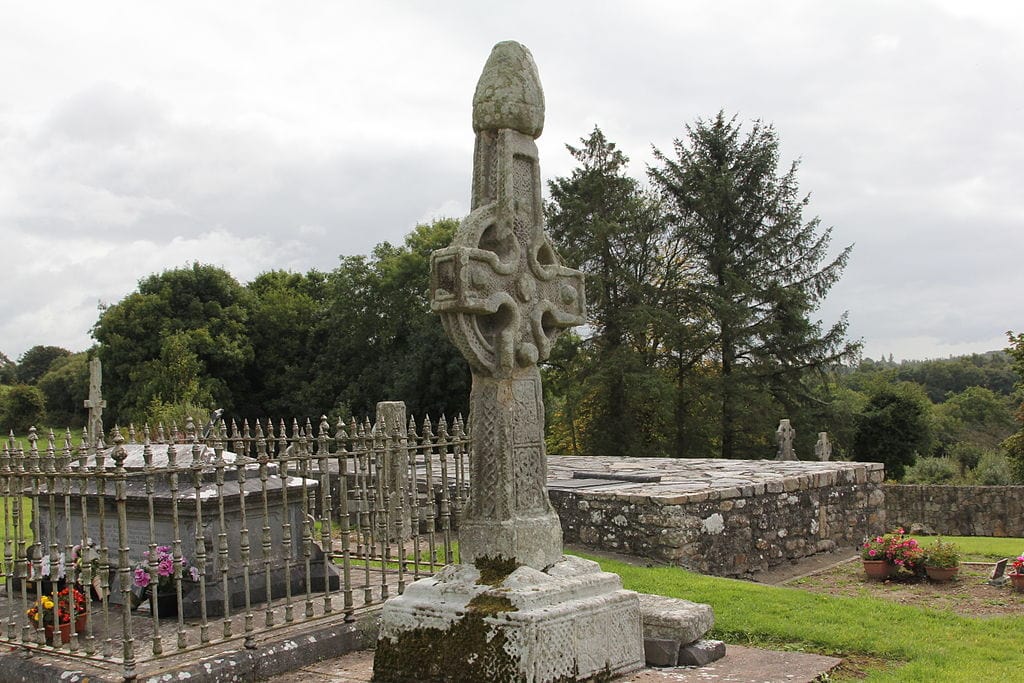

Clonmacnoise Celtic Cross, Clonmacnoise, County Offaly
This cross can be found at the Monastery of Clonmacnoise and it was carved somewhere around the 10th century. It is over 13 feet tall and is located in the Visitor’s centre to preserve it.
The cross is known as the Cross of the Scriptures or King Flann’s Cross and it is decorated on all four sides with biblical stories. that are open to interpretation. The inscription on the bottom reads ‘A prayer for Colman who had this cross erected on behalf of King Flann’.
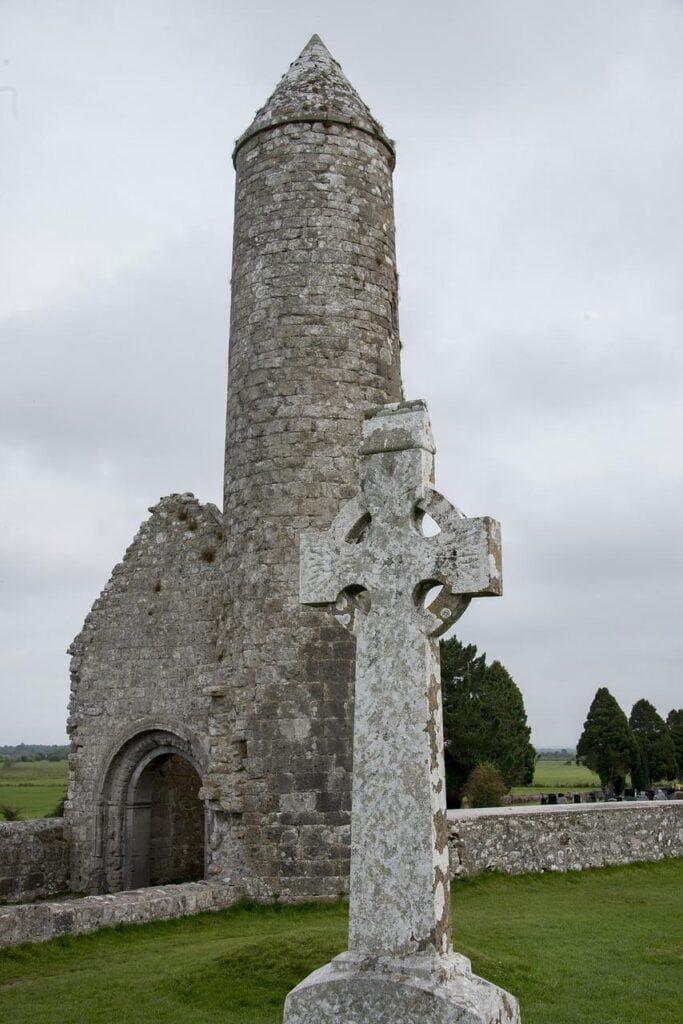

The Ahenny High Crosses, County Tipperary
Ahenny has two high crosses and they are made of sandstone dating back to the 8th or 9th century. These are two of the earliest ringed high crosses. They do not have many carved figures or biblical stories on them but they feature some beautiful Celtic artwork on all sides.
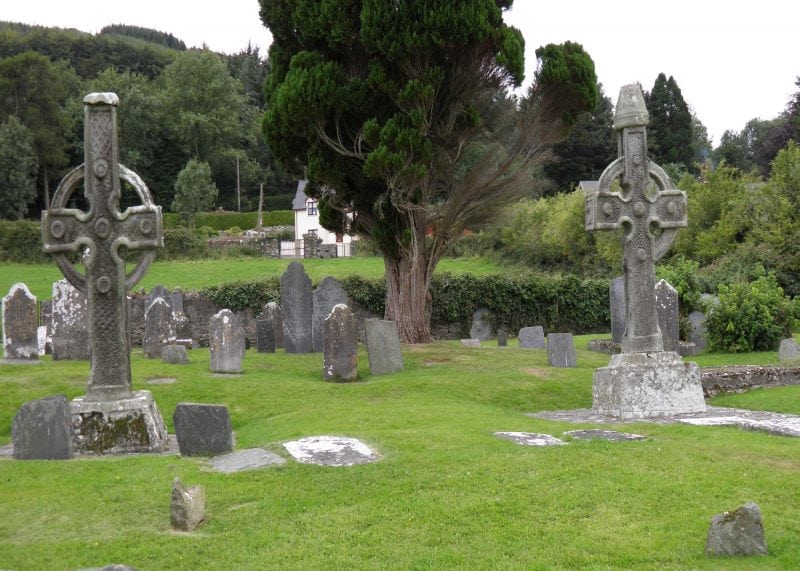

Graiguenamanagh Cross, County Kilkenny
Graiguenamanagh is home to one of the best-preserved Cistercian abbeys in Ireland, Duiske Abbey. Although the abbey was founded in 1204, there are two granite high crosses in the graveyard to the south of the church dating to the 8th century, both of these crosses were brought here from elsewhere.
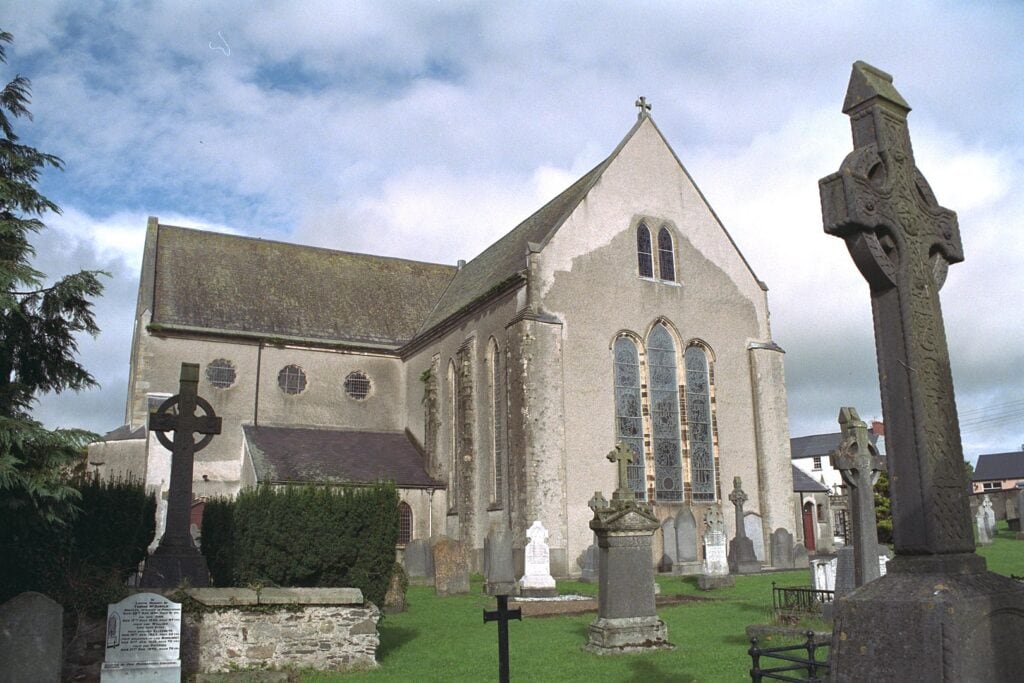

Ardboe Cross, Cookstown, Co. Tyrone
The Ardboe high cross was the first high cross erected in Ulster, dating from the 9th or 10th century. It is the tallest and best-preserved cross in Ulster, standing at around 13.5 feet high. It is located on the shores of Lough Neagh on a small hill. The cross stands over 18 feet tall and is made from sandstone.
There are 22 panels on the cross that show scenes from both the Testaments and the early life of Christ. The small chips missed from the cross are said to have been taken by immigrants moving to America to remind them of Ireland.
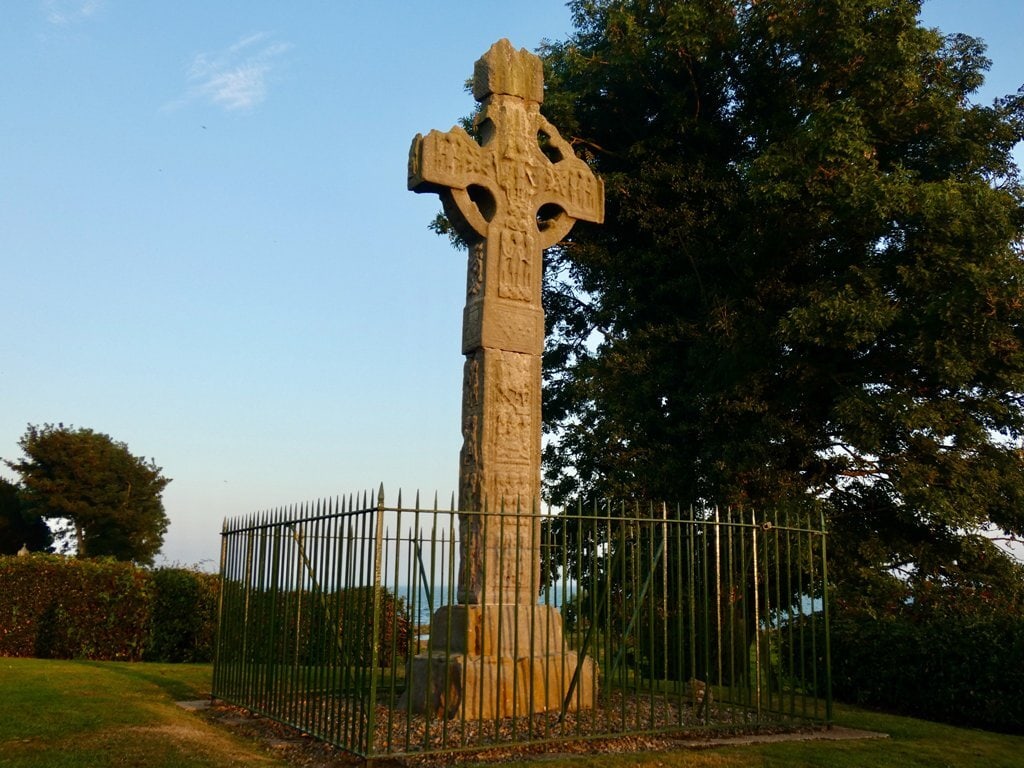

Drumcliffe Cross, Drumcliffe, County Sligo
St. Colmcille founded a monastery here in Drumcliffe, Sligo in the 6th century but all that remains today are 3 high crosses and the remains of a round tower. The crosses are in a graveyard on the former abbey grounds across the road from St. Columba’s Church where Yeats is buried.
The crosses are richly decorated with bible stories including the Cruxification, Adam and Eve, Cain and Abel and Daniel in the Lion’s Den. The edges are carved with beautiful ornamentation and the only icon of the Virgin and Child in Ireland on a High Cross.
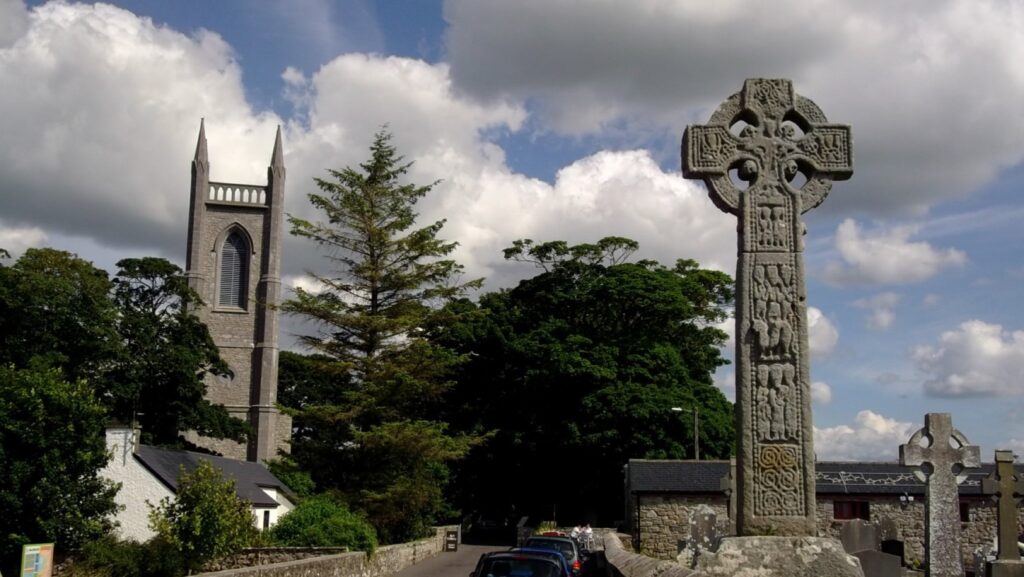

Doorty Celtic Cross, County Clare
Located in Kilfenora, and featuring a Bishop and two other clerics amongst its carvings, the cross also features a crucifixion scene. In addition, a two-headed bird is carved on the cross. It features an unpierced ring, and cross arms that are rather small compared to the overall size of the cross.
Also in Kilfenora is the well-known West cross, which stands over 15 feet high. This cross stands on its own in stone-walled fields and is carved with a crucifixion scene, as well as Celtic knotwork.
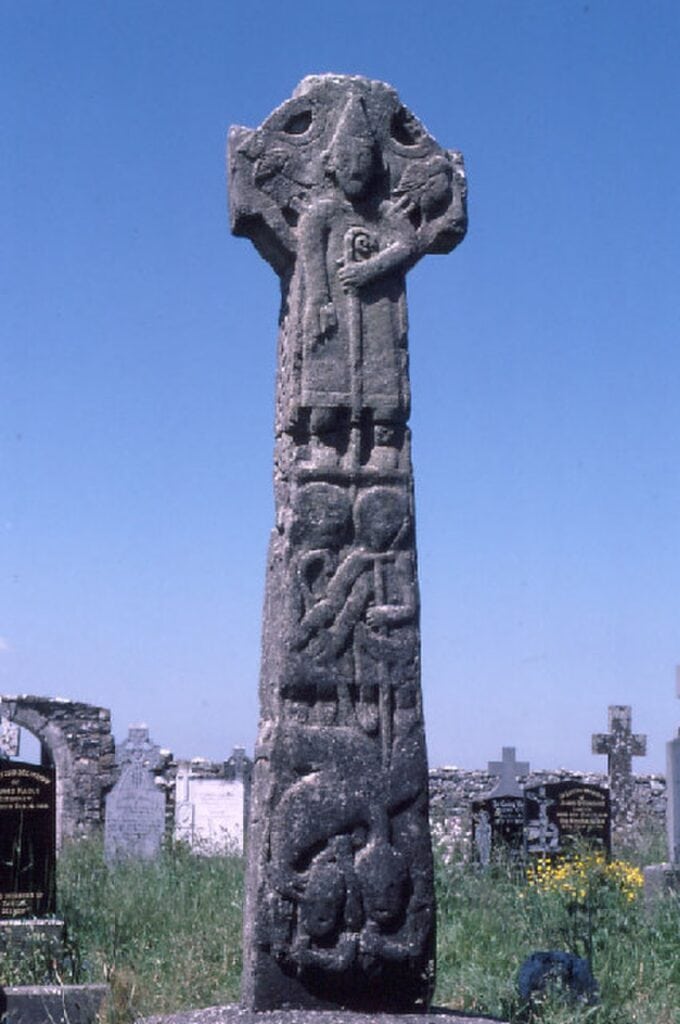

Nether Cross, St. Canice’s Church, Finglas, Dublin
The Nether Cross in St. Canice’s Church, Finglas, Dublin, has an interesting story. The cross itself stands around 12 feet high and is carved from granite although most of the detail has weathered away.
According to the history of the village, when Oliver Cromwell came to conquer Ireland the villagers took the cross down and buried it keeping its location secret for 150 years.
In 1816 the reverend at the time heard the story from one of the few parishioners who still remembered the secret, he unearthed the cross and put it back where it belonged.
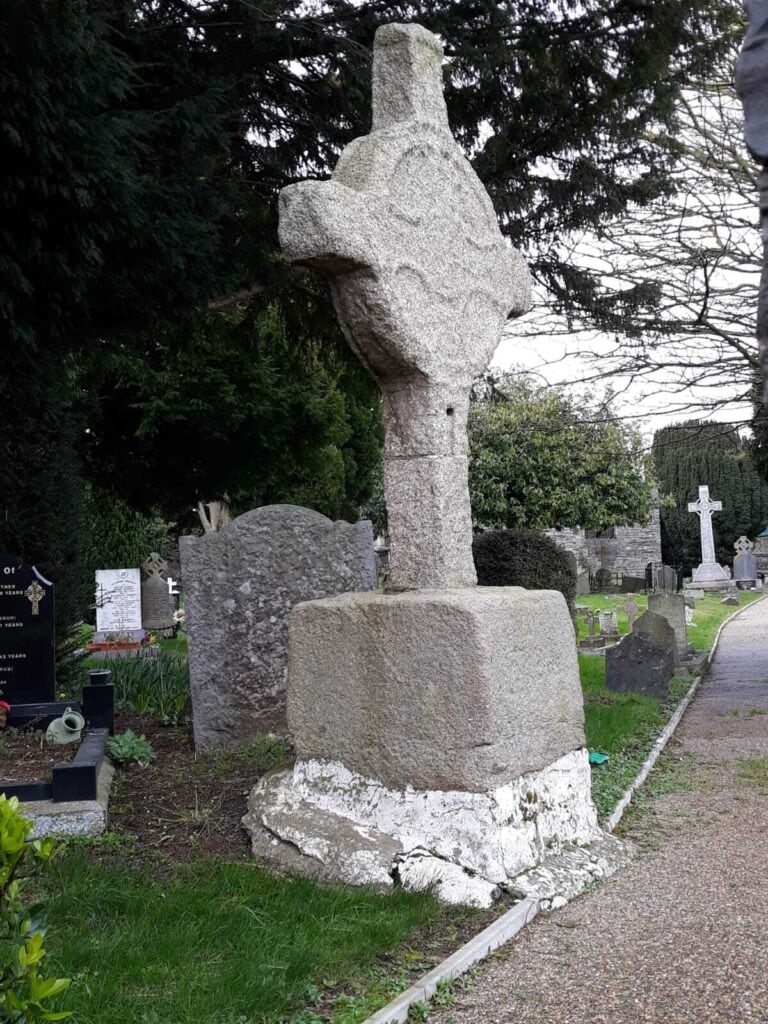

Moone High Cross, County Kildare
This cross was discovered in 1835 and is believed to date back to the 10th century. The cross stands over 17 feet tall but it took over 60 years to find all the pieces of the cross. The carvings include beautiful Celtic artwork and biblical scenes.
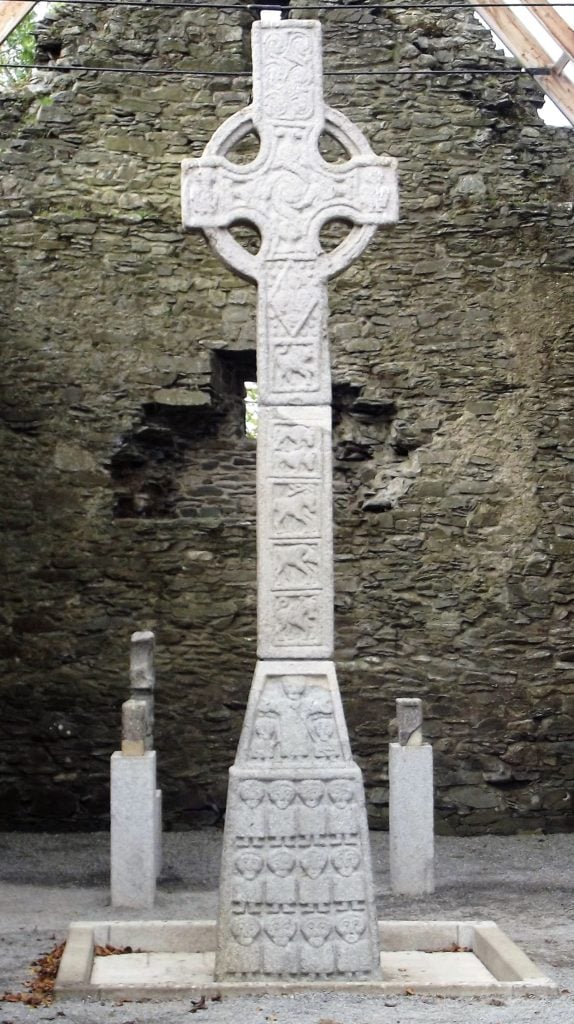

Emery Celtic Cross, Killea Donegal
I also can’t talk about Irish Celtic Crosses without mentioning the Liam Emery Celtic Cross in Killea Donegal. This Donegal Celtic cross was the work of local forester, Liam Emery. Liam secretly planted Japanese larch trees amongst surrounding evergreens which in the Autumn turn a golden shade outlining the shape of the Celtic Cross.
Sadly Liam died in 2011 aged just 51, just before his work became known to the world. His legacy is expected to last at least 70 years.
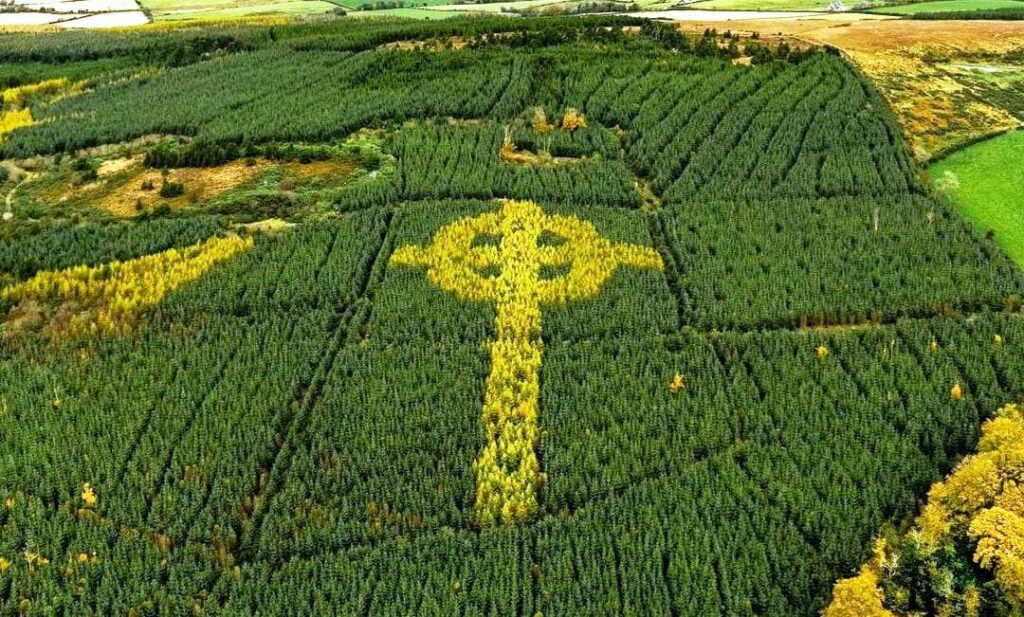

Today, the most common use of the Celtic cross is as a piece of Celtic cross jewellery or as decoration such as statues, paintings or sculptures in the home. You can buy a gold or silver version of Celtic crosses across the world. You can also buy wall art and home decor Celtic crosses. or how about a Celtic cross tattoo?
These Irish crosses are scattered all over the country both north and south. Have you visited any of these Celtic crosses yet?
You might also like
Irish Witches – famous Celtic witches
10 Ancient Celtic Holidays to Celebrate in Ireland
101 Landmarks in Ireland to see
101 Landmarks in Northern Ireland
Glendalough Monastic City Irelands Ancient East
Planning a dream trip to Ireland? Everything you need to know
